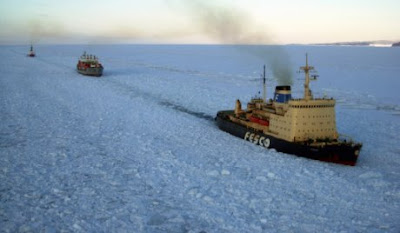ScienceRocks
Democrat all the way!
- Banned
- #1
Thirty years ago there were over 386,000 square miles of Arctic ice that was older than five years. This September, there were only 22,000 square miles of five-year-old, thicker ice remaining. In a matter of just three decades, we are missing 97 percent of older, thicker ice.
From:
Breaking News and Opinion on The Huffington Post dr-reese-halter/ wild-weather-unleashed-as_b_807149.html
From:
Breaking News and Opinion on The Huffington Post dr-reese-halter/ wild-weather-unleashed-as_b_807149.html


